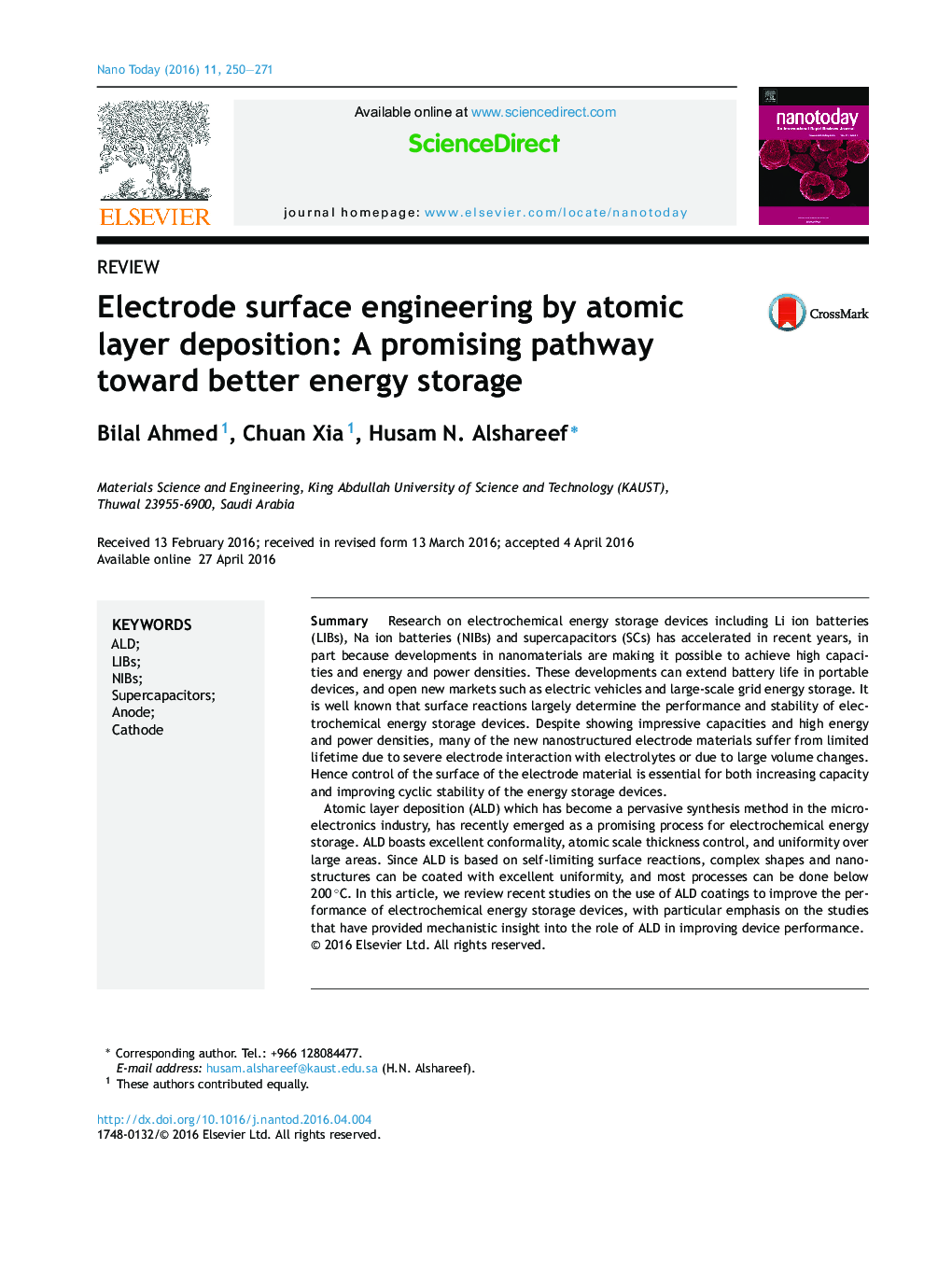| کد مقاله | کد نشریه | سال انتشار | مقاله انگلیسی | نسخه تمام متن |
|---|---|---|---|---|
| 32049 | 44892 | 2016 | 22 صفحه PDF | دانلود رایگان |
• The recent research progress on utilization of atomic layer deposition in electrochemical energy storage devices (secondary ion batteries and supercapacitors) has been reviewed.
• ALD is an excellent tool to deposit various functional layers: active, electrolyte, protective, conductive and sacrificial coatings.
• Complex 2D and 3D nanostructures can be engineered for improved energy storage performance.
• Mechanistic insight into ALD assisted performance enhancement of energy storage devices can be achieved by in situ analysis and serves as key driving factor for further improvement.
SummaryResearch on electrochemical energy storage devices including Li ion batteries (LIBs), Na ion batteries (NIBs) and supercapacitors (SCs) has accelerated in recent years, in part because developments in nanomaterials are making it possible to achieve high capacities and energy and power densities. These developments can extend battery life in portable devices, and open new markets such as electric vehicles and large-scale grid energy storage. It is well known that surface reactions largely determine the performance and stability of electrochemical energy storage devices. Despite showing impressive capacities and high energy and power densities, many of the new nanostructured electrode materials suffer from limited lifetime due to severe electrode interaction with electrolytes or due to large volume changes. Hence control of the surface of the electrode material is essential for both increasing capacity and improving cyclic stability of the energy storage devices.Atomic layer deposition (ALD) which has become a pervasive synthesis method in the microelectronics industry, has recently emerged as a promising process for electrochemical energy storage. ALD boasts excellent conformality, atomic scale thickness control, and uniformity over large areas. Since ALD is based on self-limiting surface reactions, complex shapes and nanostructures can be coated with excellent uniformity, and most processes can be done below 200 °C. In this article, we review recent studies on the use of ALD coatings to improve the performance of electrochemical energy storage devices, with particular emphasis on the studies that have provided mechanistic insight into the role of ALD in improving device performance.
Figure optionsDownload high-quality image (115 K)Download as PowerPoint slide
Journal: - Volume 11, Issue 2, April 2016, Pages 250–271
